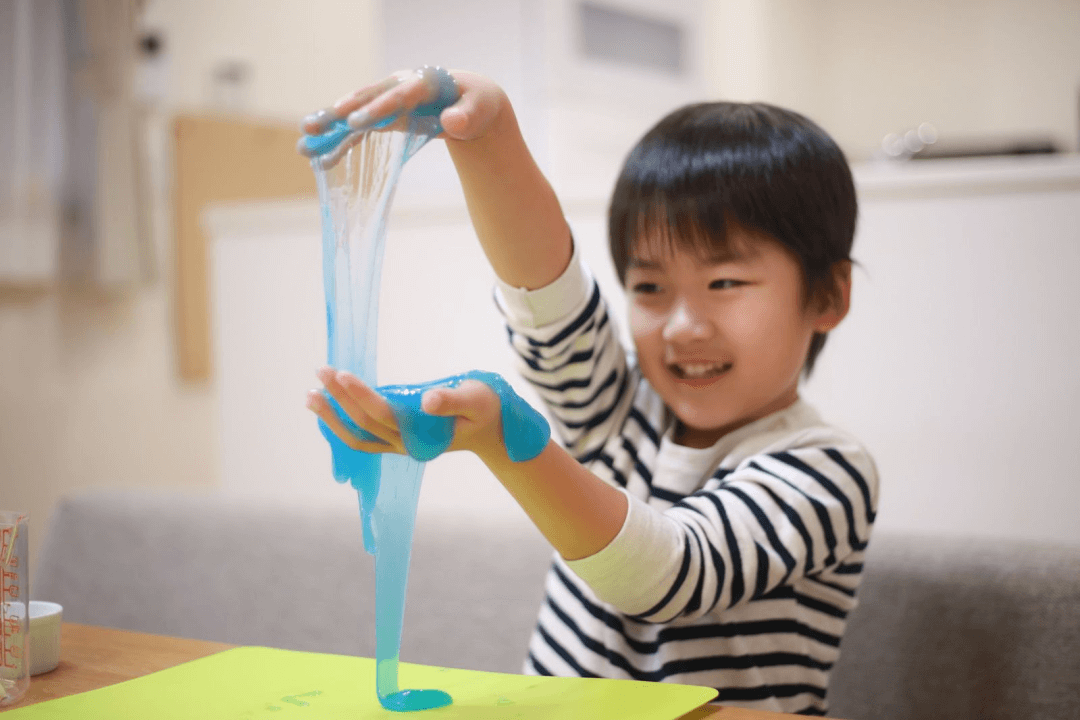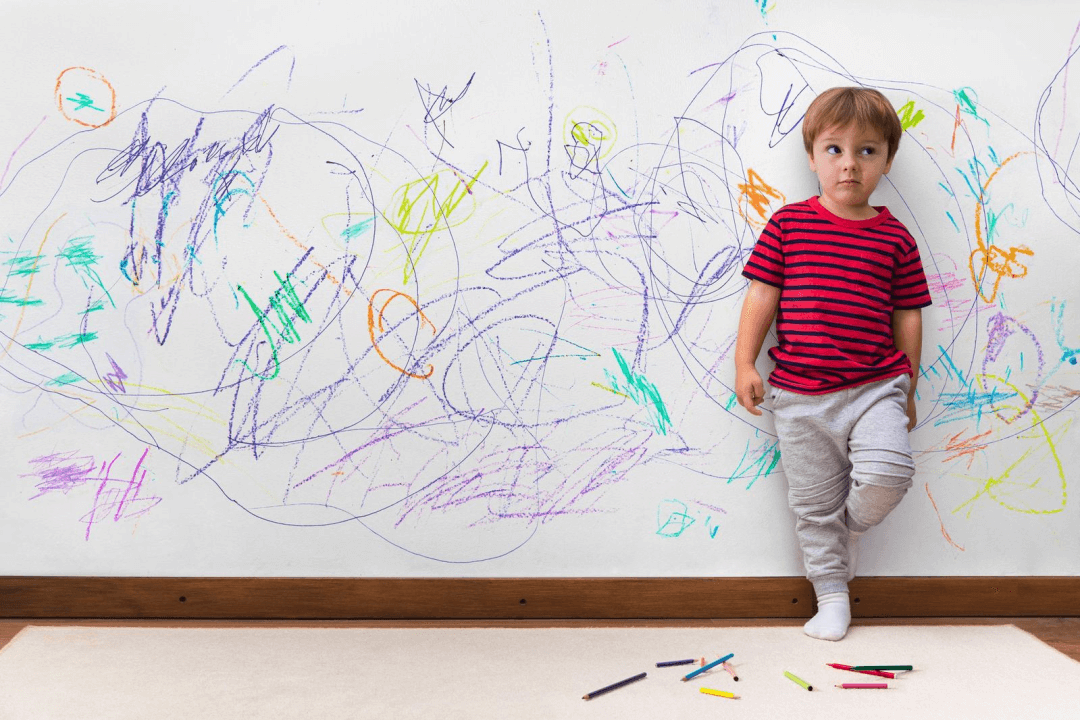How to handle challenging behavior in toddlers and young children is a common concern for parents and educators alike, but it is important to keep in mind that many children exhibit this behavior.
One of the most helpful things we try to teach children and share with parents here at Early Advantage is children should be able to express their emotions in a constructive way and help them learn from their actions in a safe environment that promotes healthy social and emotional development.
Our Favorite Principles of Positive Growth at Early Advantage
All behavior is a form of communication. At Early Advantage, we work hard to identify the different ways that children communicate. Here are some of our favorite ways to encourage positive social growth and communication in partnership with parents and children:
- Consistency:
By providing clear expectations in the classroom, and at home (avoiding conflicting messages), we help a child feel safe in a predictable environment. As children grow socially and emotionally, it is important that the expectations are clear so that their worls is as positive and predictable as possible. - Listening:
Providing time and space for a child to express emotions, feelings, and needs makes the child feel heard and understood and empathy and compassion are foundational to personal growth and formation and relationships. An adult following up well with a child and having conversations and actions that reflect the child’s conversation appropriately are a great start. - Heavy Work:
Heavy work is offering an opportunity to have a new job in the classroom that was not on the job chart. Examples could be: stacking chairs or moving a stack of books. This is an extra task to help the teacher in the moment like sharpening the colored pencils with a manual sharpener. - Conscious Discipline’s Active Calming Center:
Conscious Discipline’s Active Calming Center is a tool for self-regulation. It is an independent learning tool that engages the mind and the body. In it, children complete activities at multiple stations on the wall. At home we may be able to find creative ways to engage your child’s mind with similar activities!
Next, let’s explore a few of the effective strategies we use to address challenging behaviors and give children the skills they need to help deal with their emotions constructively. For parents, these tactics may also help to improve their child’s behavior at home. If you’re ready to discover ways to manage challenging behavior, promote positive behavior, and create a nurturing environment for the social and emotional development of children, read on.

6 Strategies to Address Challenging Behavior & Promote Children’s Healthy Social and Emotional Development
Below we will be sharing just a few of the effective strategies to implement to address the challenging behavior that younger children may be prone to. Challenging behavior requires methods that not only help to diffuse the situation, but also combines positive reinforcement and understanding of each child’s unique needs. It’s also important that parents feel empowered to consider scheduling an early childhood mental health consultation or work with a pediatrician to come up with a plan to address the behavior or for additional strategies that can help should the behavior continue.
Positive Reinforcement: A Positive Way to Handle Challenging Behavior
One way of responding to challenging behavior before it even begins by rewarding good behavior. This is where positive reinforcement comes in. Positive Reinforcement is a behavioral strategy involving rewarding or reinforcing desired behavior to increase the likelihood of its repetition. In this approach, a positive action is rewarded immediately following a particular behavior, making it more likely for that behavior to occur again.
For instance, if a child completes a task without being reminded, a parent might offer praise, such as saying, “Great job finishing that on your own!” or providing a small reward, like extra playtime. At Early Advantage, we utilize this approach with students to help them understand what behavior is expected and to encourage positive interactions in the future.
Redirection: A Tool To Deal With Challenging Behavior
Redirection is another child behavior management strategy that involves shifting focus from an undesirable behavior to a more acceptable or appropriate activity. This approach aims to guide children from problematic actions by offering alternative, positive options.
For example, if a toddler is attempting to grab items off a shelf, a caregiver might use redirection by providing a different suitable toy or engaging the child in a different activity. The redirection technique not only prevents unwanted behavior but also encourages the child to explore and learn within acceptable boundaries. By steering attention toward more suitable activities, redirection can foster positive behavior and create a supportive environment.
Modeling Behavior: Setting an Example for Preschool Children
Another strategy some parents may find beneficial, and one we encourage here at Early Advantage is modeling behavior. This strategy involves demonstrating a desired behavior for a child to observe and imitate. With this approach, the idea is that children often learn by observing the actions of others, particularly significant adults or caregivers in their lives. For instance, if a parent or teacher consistently demonstrates calm and respectful communication during moments of frustration, a child is likely to adopt similar behavior when faced with challenges.
Modeling behavior serves as a powerful tool for teaching appropriate conduct, as it provides a tangible example for children to follow. By showcasing positive actions, caregivers contribute to the development of socially and emotionally adept individuals who can navigate various situations with understanding and composure.
Rewards and Consequences: Helping Children Reap the Benefits of Good Behavior
As a parent, chances are you’ve heard of the rewards and consequences strategy. It involves receiving rewards for displaying positive behavior and facing consequences for engaging in challenging or inappropriate behavior.
For instance, if a child consistently completes chores or tasks on their own or without reminders, they may earn privileges like extra playtime or a small treat as a reward. On the opposite side of things, if a child engages in a negative behavior like not following rules, they may face consequences such as loss of screen time or a different temporary restriction.
The rewards and consequences approach establishes a clear framework, helping children to understand the direct relationship between their actions and the outcomes, helping to shape their behavior over time.
Collaborative Problem Solving: Preschool and Early Childhood Solutions
When challenging behavior is happening with a child, parents who may be struggling could consider collaborating with preschool or early education to find strategies that may help identify what is causing the issue and how to address them. At Early Advantage, we recognize the child as an active participant in addressing issues. We believe the path to improvement starts with fostering a sense of autonomy and responsibility.
For instance, if a child is having difficulty completing tasks or is acting out at home, we collaborate with the parent(s) to problem-solve and discuss the challenges with the child. Together we work to understand concerns, and create a plan to improve the challenging behaviors.
By doing this, we not only address the immediate issue but empower the child to be part of the solution. This gives the child not only a sense of ownership but it enhances their problem-solving skills that extend beyond specific behavioral challenges.
Environmental Modifications: Setting the Scene to Deal With Difficult Behavior
For some children, the environment they’re in might trigger certain behaviors. By making modifications like adjusting the physical surroundings to reduce triggers you can help to minimize challenging behavior and promote positive conduct. When parents participate in this approach they recognize the impact of the environment on behavior and seek to create a setting that supports desired actions.
An example of this would be if a child is easily distracted during quiet time or nap time. A parent might use environmental modifications like providing a quiet space free from unnecessary distractions such as other children or a television screen, in order to promote a more positive behavior.

Helping Your Child With Challenging Behavior: The Future is Bright!
Supporting children on their growth journey means embracing the child, listening to the child, and seeing the challenge together. Small steps in smaller groups may be one way for children to walk into a world that feels safe.
Caring for others, helping others, being needed by others….makes a community come alive for children who are just beginning to experience this wonderful world.
We love to help children learn and learn how to express themselves in a positive and wonderful way. We hope to see you soon, plan a visit any time!

